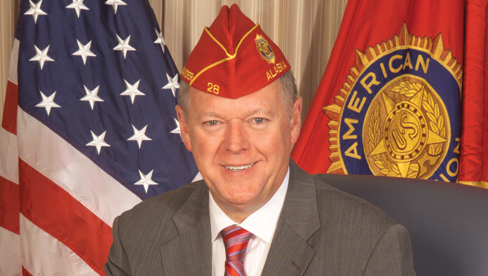
The Legion and VA: allies, not adversaries
As the nation's largest and most unified voice of U.S. military veterans, The American Legion has an essential duty to provide public oversight for the Department of Veterans Affairs. That's quite by design. Since no other arm of government touches the lives of so many veterans, and no other organization represents so many veterans, the VA-Legion relationship is natural. We are devoted to proper funding for VA, and closely monitor its uses. As advocates for the patients, we are not - as is commonly misunderstood - adversaries of the government. One thing the Legion and VA always agree on: we share a mission to provide the best care possible for those who swore with their lives to protect our nation.
The Legion's System Worth Saving (SWS) program is an excellent illustration of that alliance. Throughout the year, the SWS Task Force conducts site visits at VA facilities across the nation. Task-force members and Legion staff meet with doctors, nurses, administrators and patients, learning straight from the sources the greatest challenges facing them. We use that intelligence to write resolutions, help draft legislation, influence policies and make the case for funding. The full SWS report is shared annually with VA, Congress and the White House.
The program began in 2003 when one of my predecessors as national commander, Ronald F. Conley of Pennsylvania, made it his goal to visit VA medical facilities in every American Legion department. The questions he asked covered such issues as access to doctors, inpatient bed space and nursing shortages, at a time when thousands of patients were waiting months for appointments. That effort led to many improvements in the system and triggered new priorities for VA's future.
I recently participated in an SWS visit in my home department of Alaska, where I've worked as a service officer since 2006, helping veterans file VA claims. The SWS Task Force spent several hours talking with an Anchorage facility's department managers and health-care providers. They talked budget, patient numbers, various types of care and future construction plans. We later toured the adjoining Joint Base Elmendorf-Richardson DoD/VA Joint Venture Hospital, which houses a new traumatic brain injury (TBI) clinic, and met with veterans, who most often gave rave reviews over the quality of their care.
The SWS Task Force uses information at places such as Anchorage to better understand best practices in VA. Like problems that run through the system (aging infrastructure, for instance), positive reports on quality of care always reinvigorate our commitment to keep the system well-resourced and on the road to improvement.
Some issues are national, such as the untimely budgets all VA health-care facilities faced until advance appropriations became law. Some issues are regional, like delivering VA care in a state as rural as Alaska. And some are local, like the lack of a needed hospital in a veteran-heavy community. Regardless of the issue, good or bad, it is the Legion's sacred responsibility to get to the bottom of what's working and what is not, and bring that message back to Washington so changes can be made. It is one of the ways the Legion works at every level, from the individual patient to VA Central Office, to improve the lives of veterans. Few things are more central to our founding purpose.
